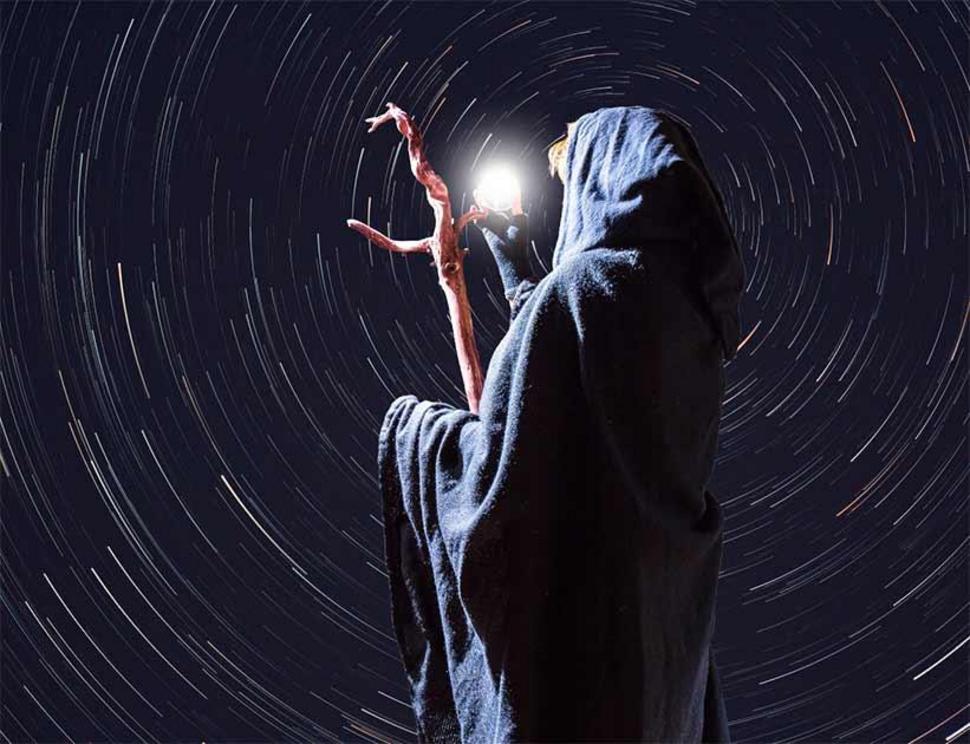The legendary Mug Ruith: Irish wizard, sun god, or ancient astronaut?
Top Image: Mug Ruith was one of the most powerful and enigmatic characters in Irish mythology.
The Irish Celtic heritage is filled to the brim with unique and wondrous characters. From the tales of ancient and venerable High Kings, to their colorful pantheon and powerful wizards, Irish history is full of characters and events that are so outlandish they seem often hard to grasp and explain.
Luckily, thanks to the early medieval Christian manuscripts that managed to preserve a good deal of Irish oral tradition, we can explore these myths and legends in great detail. One of the most interesting characters that appears in these myths is the mystical Mug Ruith, a powerful druid with odd and supernatural powers.
Credited with many larger-than-life deeds in the crucial turning points of Irish legendary history , this druid seems more like a god than a simple wizard. How can scholars best explain this strange, elusive hero?
The Wizard Mug Ruith
All the surviving literary sources from early medieval Ireland point to one place – Valentia Island, on the southwestern-most tip of Ireland. It is said that here dwelt the famed druid Mug Ruith (also Mogh Roith), whose name translates to “Slave of the Wheel”.
Valentia Island is known in Irish as “Dairbhre” – The Oak Wood. This made Mug Ruith a hero of Munster, a Gaelic Irish Kingdom in the south of modern-day Ireland, in whose territory Valentia Island was found.
The island itself is steeped in ancient history and shows traces of early habitation, especially with the remnants of dolmens and passage tombs. It is possible that for the inhabitants of ancient Munster, the island was seen as a remote location and a likely place for odd myths and curious heroes.
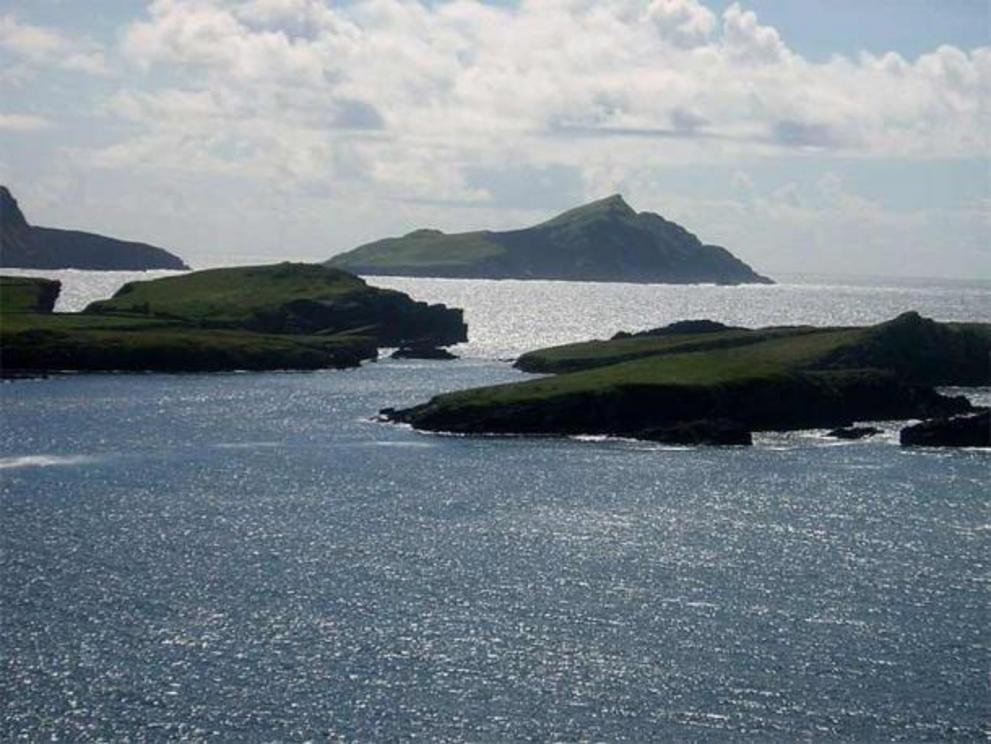 Valentia Island is a remote place even today
Valentia Island is a remote place even today
Mug Ruith is described as an all-powerful druid (Old Irish druí – “sorcerer, wizard”) who was ascribed all sorts of supernatural powers. Some sources call him blind, while others say he was one-eyed.
In certain tales he loses one of his eyes in the snowy Alps, while the other he lost while trying to stop the course of the Sun for two days straight. It was said that he could grow to an enormous size , and possessed the power to turn men into stone with his breath.
Curiously, some of the descriptions sound as if they came straight from a science fiction movie. Mug Ruith supposedly flew in a special “ machine” called the Roath Rámach, or the “Oared Wheel”. In some depictions, he rides in an ox-driven chariot, which could be the same vehicle as the Oared Wheel.
The oxen are described as “fast and furious, having the speed of the wind of March, and the agility of birds.” Either way, the vehicle in which he flies is fast, and within it, night is bright as day.
The druid carried with him a “star-speckled black shield with a silver rim”, and one of his powerful weapons was a stone that turned into a poisonous eel when it was thrown in water. The powerful breath of this wizard was enough to cause violent storms that could smite his enemies.
Supernatural Powers
As for his appearance, Mug Ruith is almost always described in the same way. He wore a feathered bird mask and a hornless bull hide, which gives him a sort of shamanistic appearance. He was also incredibly old, and it is stated that he lived throughout the reigns of nineteen ancient Irish kings.
His curious appearance is laden with pagan symbolism, especially considering the fact that the myths were penned down in a Christian era. One writing gives the following description:
“The bull hide from a hornless brown bull belonging to Mug Roith was now brought to him along with his speckled bird-mask with its billowing wings and the rest of his druidic gear. He proceeded to fly up into the sky … along with the fire and he continued to beat the fire towards the North as he chanted a rhetoric: ‘I fashion druid’s arrows.’”
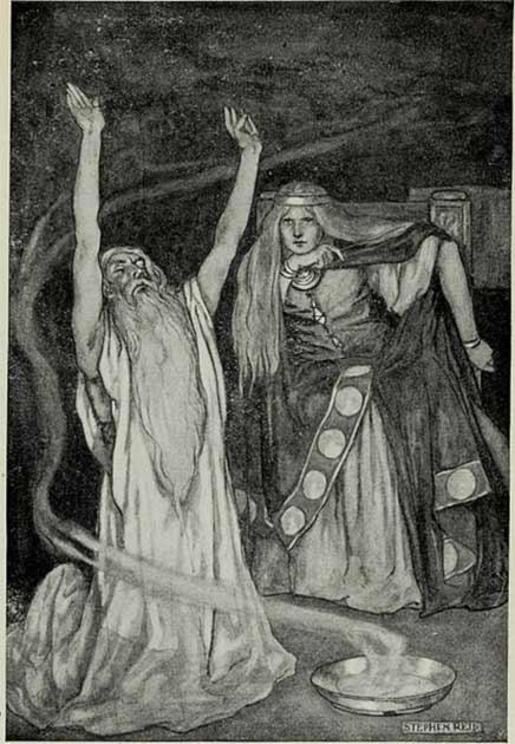 Irish druids were often thought to have magic powers, but Mug Ruith was powerful even for a druid
Irish druids were often thought to have magic powers, but Mug Ruith was powerful even for a druid
Since the many different stories and legends concerning this wizard were written down in various stages of Irish medieval history, there is much disagreement about when Mug Ruith lived. Some state that he lived during the reign of the famed High King Cormac mac Airt, who supposedly ruled sometime between the 2nd and 4th centuries AD.
Elsewhere, such as in the iconic book Lebor Gabála Érenn , Mug Ruith is said to have lived in the reign of the ancient King Conamel, who supposedly existed some two thousand years before Cormac Mac Airt. It is possible that these conflicting accounts, and the confusion this caused, led to the legend that the druid was extremely long-lived and saw the reigns of nineteen kings.
Demonized by Christians
Many modern scholars come to the conclusion that Mug Ruith was most likely a personification of an ancient pagan Storm or Sun God. This would not be a first in Irish mythology, where many chief deities are subjects and main characters in colorful stories.
Such gods were often attacked by later Christian teachings, and indeed during the Christian era in Ireland, the character of Mug Ruith was vilified and demonized. This was doubtless an effort to distance the Irish folk from their ancient traditions and draw them closer to the Christian doctrines.
Through this we have some great stories, even one that names Mug Ruith as the executioner who beheaded John the Baptist , bringing an eternal curse upon the Irish people. Similar practices existed throughout early Christian Europe, where the clergy actively demonized old folk heroes and pagan gods, making them evil and devilish.
A Pagan Druid In Jerusalem?
Certain medieval manuscripts place him in Jerusalem at the early beginnings of Christianity. There, it was said, he became a student of Simon Magus , a sorcerer and religious figure that taught Mug Ruith all his supernatural powers.
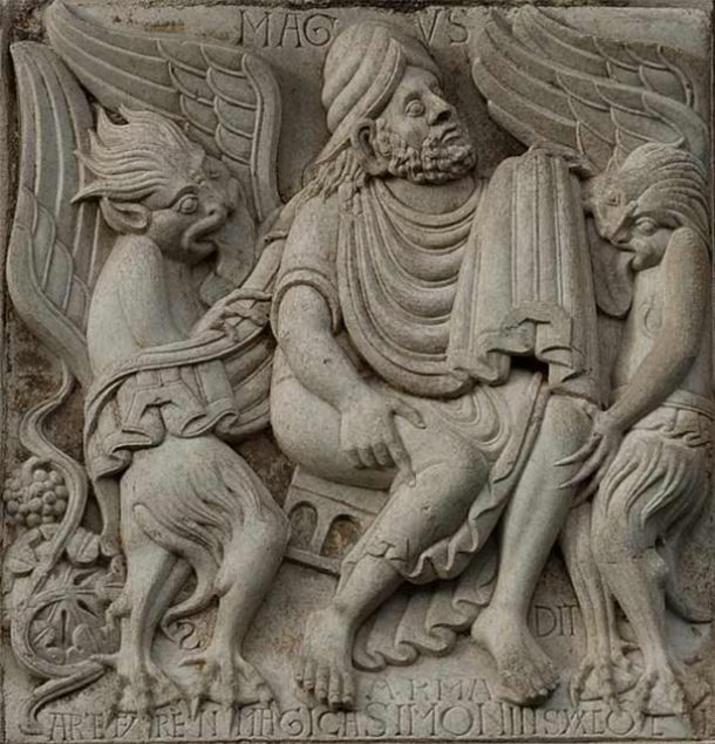 Simon Magus with demons, Basilicia Saint-Sernin, Toulouse
Simon Magus with demons, Basilicia Saint-Sernin, Toulouse
These legends tell that together with his daughter, Tlachtga – an equally powerful druidess – he traveled east to Simon, who taught him and helped him construct his powerful flying machine , the Oared Wheel. Here, the vessel is described in more detail, having sides of rowan wood, windows of glass, and poles of electrum.
The ship deafens anyone who hears it, blinds anyone who sees it, and kills anyone it strikes. One cannot help but connect such a description to the theories of “ ancient astronauts ” and extraterrestrial flying machines that could have been described in the very ancient periods of human history. Is there more to the story of Mug Ruith than first meets the eye?
Early myths say that Mug Ruith received the territory of Fir Maige Féne (Fermoy, in the far south of Ireland), for his own descendants. The Fermoy tribe of medieval Ireland did indeed claim their descent from this druid, but were still ruled over by the more powerful O’Keefes.
Similar tales say that Mug Ruith – upon his return from the Siege of Druim Damgaire – settled in the Fermoy area, becoming the ancestor of Fir Maige Féne, or Fermoy. An important Iron Age hill fort lies in the hills some 2.4 km (1.5 miles) south of Fermoy, known as Carntierna (Tigernac’s Cairn), which could be related to these claims.
As Powerful As Any God
The exploits of Mug Ruith are featured most prominently in the Irish saga of Forbhais Droma Dámhgháire, or The Siege of Knocklong. Here, he is one of the principal characters alongside High King Cormac mac Airt. Curiously, it is here that King Cormac is presented as a somewhat evil character, which is a stark contrast from his usual portrayal as a just, kind, and successful king.
In this tale, Mug Ruith successfully utilizes his supernatural powers to halt an invasion from Cormac, driving him back in defeat. At his side, Cormac had his chief druids: Ceacht (Power), Crotha (Creator), Cith Mor (Great Battle), Ceathach (Smiter), and Cith Rua (Noble Battle). It was these five druids, alongside Cormac and all of his forces, who faced Mug Ruith.
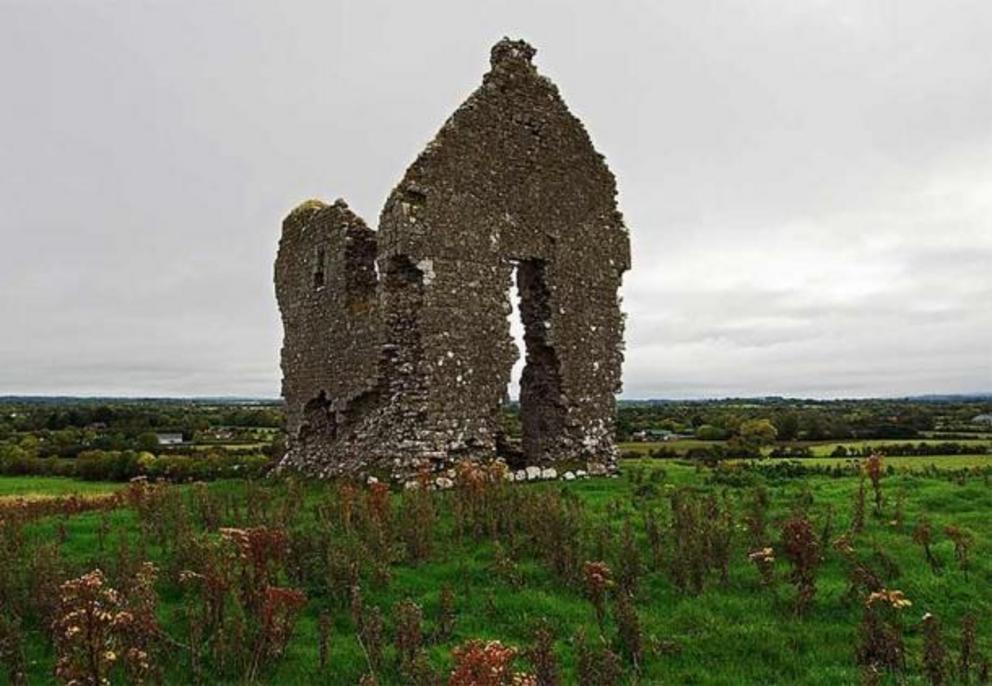 Knocklong Hill in Limerick, site of the legendary Siege of Knocklong
Knocklong Hill in Limerick, site of the legendary Siege of Knocklong
Throughout this saga, many fabulous and supernatural events transpire. During the ensuing battle, Mug Ruith asks for his powerful “poison stone”, which he describes as “my hand stone, my hundred-fighter, my destruction of my enemies”. This indicates that this “stone” was some sort of powerful weapon.
When the druid began reciting a chant, the stone transformed from a “fiery hard stone” into a “red water snake that coiled around its victims...a sea eel...a vulture among vultures that separated body from soul...an adder of nine coils around the body…”
Later, Mug Ruith sends forth his powerful breath that turns the stones and sands of the earth into flaming balls of fire that are hurled against the enemy army.
An Ancient Inspiration
In another event, Mug Ruith has to face the three female druids from the enemy army. These druidesses transform themselves into brown sheep with iron beaks. The druid then utilizes his magical kindling wood, tinder, and flint, in order to fashion powerful supernatural dogs that pursue these sheep.
Curiously, the same elements appear in the story of Mongán mac Fíachnai, another mythical medieval Irish hero. Following these events, Mug Ruith adorns his animalistic clothes, garments of power, and exhales air into the heavens. He then seemingly flies and transforms into a black cloud that rains blood on the enemy’s camp.
 Mug Ruith defeated many Irish heroes through shapeshifting and controlling the elements
Mug Ruith defeated many Irish heroes through shapeshifting and controlling the elements
Throughout the medieval Irish history, Mug Ruith was mentioned in many places at different eras. This indicates that he was likely a very popular figure in Irish history and folk tales. The earliest references date to the mid-seventh century, and occur in the ninth century Old Irish poems, the abovementioned saga, and also in the Book of Leinster from the second half of the 12th century. Stories of the “arch-druid” Mug Ruith were still told in Ireland in the 17th century.
The stories tell that this druid had three children. In the sagas are mentioned his two sons, Fercorb and Buan, and he also had a famous daughter, the druidess Tlachtga. Her story is also deep and detailed, and deserves an article of its own.
More Than Human
Some scholars note that the heavy symbolism used in the description of Mug Ruith, in particular his flying rowing wheel, suggest a pre-Christian Sun deity that survived in the form of a powerful folk hero.
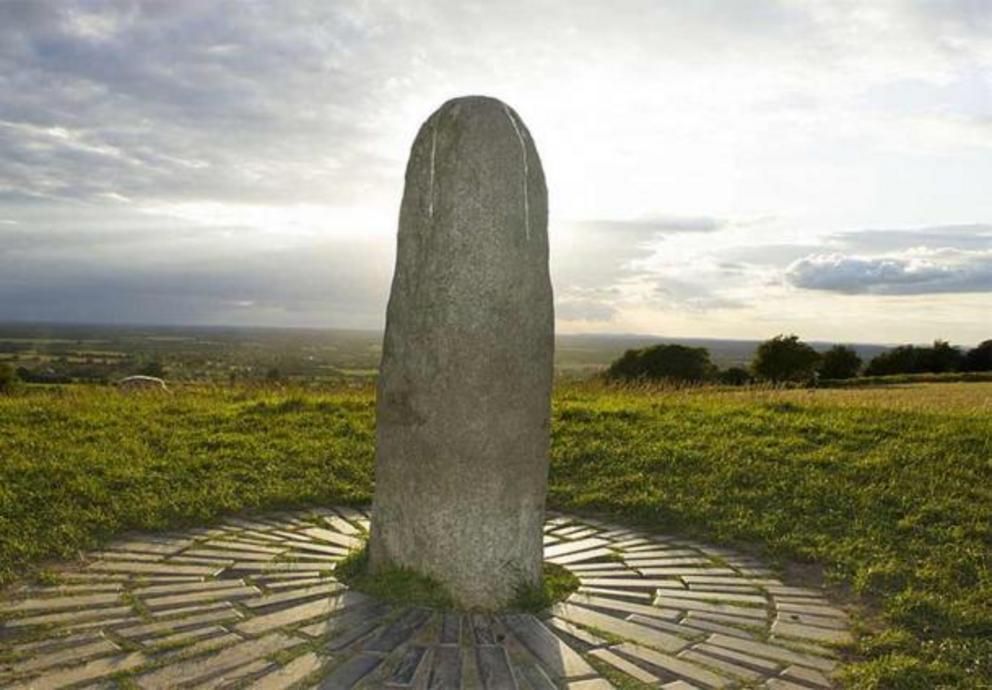 Lia Fáil
Lia Fáil
In fact, the rowing wheel could be linked to the Roth Fáil, an ancient wheel-shaped stone engraving from southern Ireland, or with the similar Lia Fáil, a phallic stone at the royal hill of Tara. In pre-Christian Celtic territories, wheel-shaped images and engravings are not uncommon, and are almost always linked to ancient Sun Gods or Goddesses.
We can also see, from the surviving stories, that Mug Ruith possessed the power to control all four elements of nature: fire, earth, water, and air. In a broader sense, these are the aspects usually ascribed to tribal pagan gods who were almost always omnipotent.
This, again, likely places this druid into a role of an ancient Sun God who survived the ages in the form of a powerful folk hero. Furthermore, the elements of his story are not unique: they appear throughout the Celtic-speaking world, especially in the British Isles .
Stories of the Sea God Manannán mac Lir, or the powerful wizard Merlin, have clear parallels to Mug Ruith. There are many similar folk stories on the continent, that date from the oldest ages of ancient Europe.
But ultimately, Mug Ruith is an iconic representative of the colorful, unique and unmistakable Irish mythology. His is only one story in the sea of powerful characters with ancient roots. And due in part to the early Christianization of Ireland, these folk stories were preserved, penned down by monks and scribes, snatching ancient stories away from the grip of passing time.
Video can be accessed at source link below.

